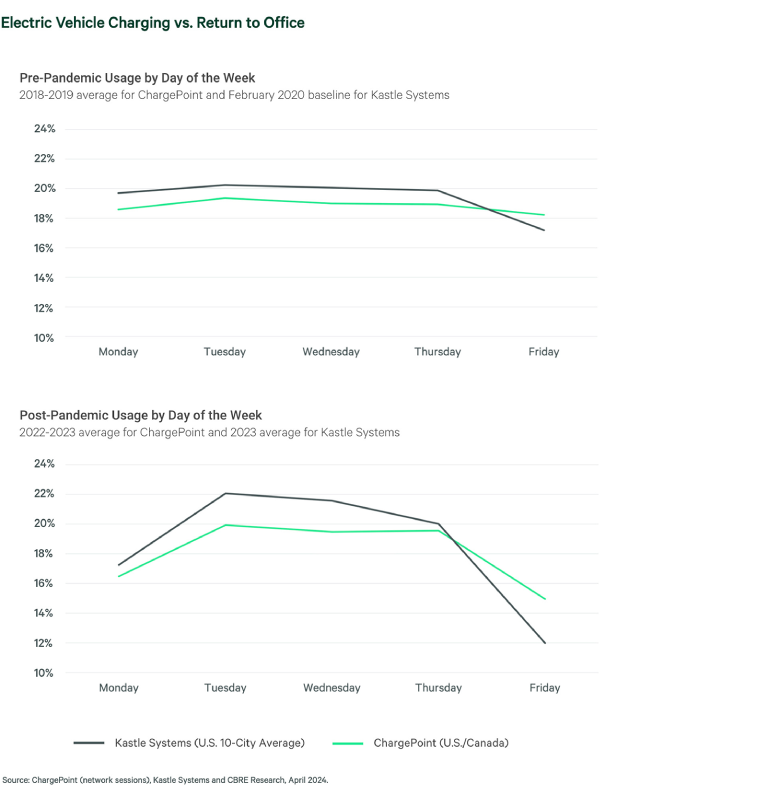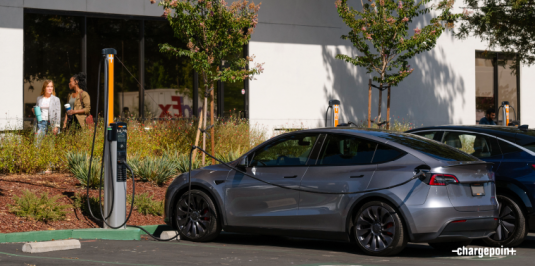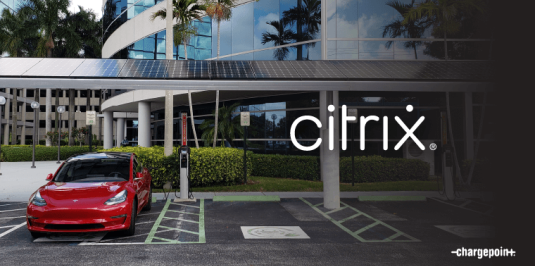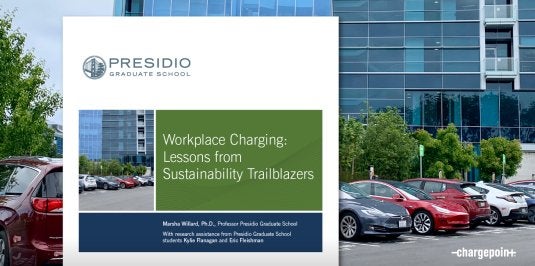
We live and work in a new world. Flexible hybrid schedules are now the norm for office, not the exception. But how we relate to our offices isn’t the only thing that’s changed. While hybrid work policies have soared post-pandemic, so has the need for EV charging.
Here are five takeaways from CBRE’s latest report on workplace EV charging trends:
1. Workplace charging grew nearly 3x faster than the number of new charging stations in 2023.
Takeaway: The installation of EV chargers at offices is not yet keeping up with the skyrocketing demand for EV charging as a workplace amenity. Offices need to pick up the installation pace to meet employee EV charging demand.
2. Post-pandemic workplace charging in North America is concentrated between Tuesdays and Thursdays.
Takeaway: While hybrid work is here to stay for many offices, it still means employees are coming into the office regularly multiple days a week—in fact, quite consistently. The majority of office employee charging now happens Tuesdays, Wednesdays and Thursdays. If you have an office and employees, more and more of them will need a place to charge their EVs for more than half of the week. Your office also has a unique new revenue stream opportunity: offering charging to the public during non-peak hours when employees don’t need to charge. Imagine a world where your employees charge Tuesdays, Wednesdays and Thursdays, and the public pays to charge the rest of the week when employees work from home or rest on the weekends. This win-win strategy embodies the multitasking nature of EV charging as a commercial opportunity and amenity.
3. The U.S. was one of the world’s fastest-growing countries for EV sales in 2023, with sales up 50% year-over-year.
Takeaway: EVs and EV charging are here to stay. While the growth rate for demand might look different each quarter, the overall change in driver demand away from ICE vehicles towards EVs is here to stay. This is true globally. The U.S. is no exception. The big picture is that 1 in 5 new cars purchased globally last year was an EV. The U.S. is part of that global trend.
4. The largest and fastest-growing U.S. EV markets include Florida and Texas.
Takeaway: EVs and EV charging aren’t just for Californians. Demand for EVs and EV charging is a national trend. People are changing how they drive nationwide, including in the South and Sun Belt. An EV lifestyle works just as much in Florida and Texas as California or New York.
5. Office charging trends vary across top U.S. EV markets. For example, more Texans than Californians charge their vehicles at the workplace over the weekend, while Californians are more likely to do so on weekdays.
Takeaway: Public charging infrastructure isn’t at the same development level in every state. While states play catch-up investing in public EV charging, there will be demand for EV charging across settings, including at offices on weekends. EV charging at offices will remain an important part of the infrastructure and a potential revenue source for years to come.
Charging is skyrocketing
“As more and more drivers embrace electric vehicles, it’s critical that charging be accessible anywhere a driver needs it,” said Rich Mohr, SVP, Americas at ChargePoint. “While workplaces have offered EV charging as an amenity for years, we’re seeing a clear need for more chargers in order to meet the driver demand, and quickly.” According to CBRE’s Occupier Survey, 30% of companies favor offices with EV chargers, a preference that rises to 40% at large companies.
In the era of hybrid work, the offices and real estate portfolios that win will be the ones who give people what they want.
And what do they want? The math is clear: EV charging. Explore CBRE’s full report on office EV charging trends.
Talk to an expert to explore workplace EV charging solutions







